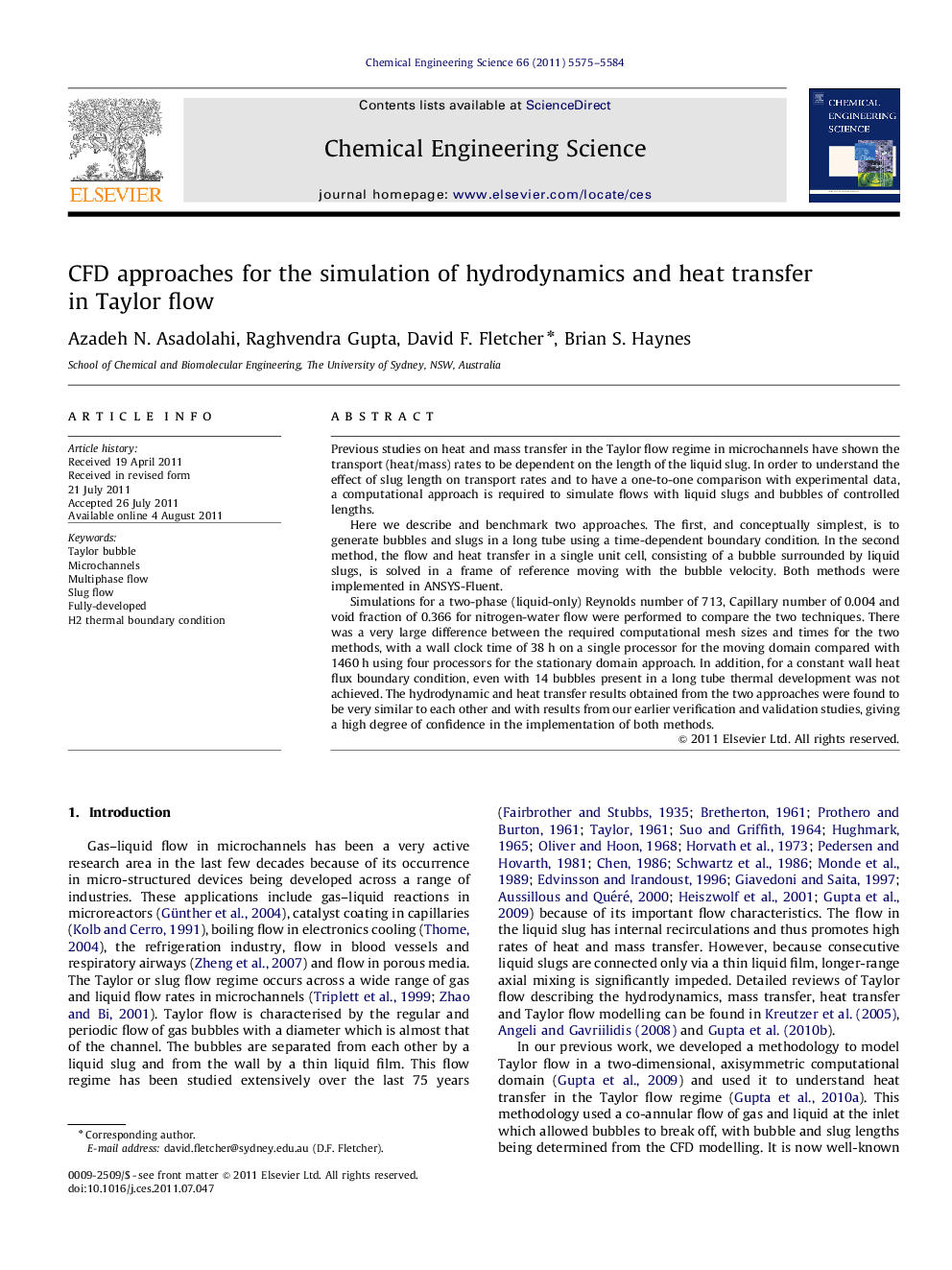| کد مقاله | کد نشریه | سال انتشار | مقاله انگلیسی | نسخه تمام متن |
|---|---|---|---|---|
| 156140 | 456923 | 2011 | 10 صفحه PDF | دانلود رایگان |

Previous studies on heat and mass transfer in the Taylor flow regime in microchannels have shown the transport (heat/mass) rates to be dependent on the length of the liquid slug. In order to understand the effect of slug length on transport rates and to have a one-to-one comparison with experimental data, a computational approach is required to simulate flows with liquid slugs and bubbles of controlled lengths.Here we describe and benchmark two approaches. The first, and conceptually simplest, is to generate bubbles and slugs in a long tube using a time-dependent boundary condition. In the second method, the flow and heat transfer in a single unit cell, consisting of a bubble surrounded by liquid slugs, is solved in a frame of reference moving with the bubble velocity. Both methods were implemented in ANSYS-Fluent.Simulations for a two-phase (liquid-only) Reynolds number of 713, Capillary number of 0.004 and void fraction of 0.366 for nitrogen-water flow were performed to compare the two techniques. There was a very large difference between the required computational mesh sizes and times for the two methods, with a wall clock time of 38 h on a single processor for the moving domain compared with 1460 h using four processors for the stationary domain approach. In addition, for a constant wall heat flux boundary condition, even with 14 bubbles present in a long tube thermal development was not achieved. The hydrodynamic and heat transfer results obtained from the two approaches were found to be very similar to each other and with results from our earlier verification and validation studies, giving a high degree of confidence in the implementation of both methods.
Research highlights
► Simulation methods for Taylor flow heat transfer.
► Laboratory frame of reference and a long channel.
► Single bubble and slug in a moving domain.
► Moving domain approach is much more computationally efficient.
► Both methods give the same results.
Journal: Chemical Engineering Science - Volume 66, Issue 22, 15 November 2011, Pages 5575–5584